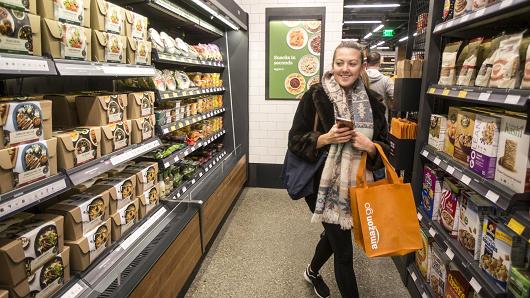- Seventy percent of shoppers will be buying their groceries online within five to seven years, according to projections from the Food Marketing Institute and Nielsen.
- Total online grocery spending could reach $100 billion.
The majority of U.S. grocery shoppers could be buying online within five years, according to a joint report from Food Marketing Institute and Nielsen.
That timeline represents a faster pace of adoption than previously believed, as both organizations originally estimated it could take up to 10 years for consumers to warm up to buying groceries on the web.
According to projections, 70 percent of shoppers will be buying some portion of their groceries online within five to seven years. That could equate to $100 billion in total spending. The shift online will impact grocery shopping in stores, where consumers are still expected to spend 80 percent of their grocery dollars.
“There is a fundamental shift in retail, and we are seeing an acceleration,” said Thom Blischok, global retail strategic advisor to Nielsen. “You can now find the basics of living online pretty easily.”
Traditionally, the grocery industry has been more insulated from e-commerce disruption than its peers in the apparel and book sectors. Shoppers tend to be loyal to their grocers, and the grocery supply chain is so complex.
However, the rise of meal kits and delivery services has helped to change shoppers’ expectations. Amazon’s acquisition of Whole Foods, which threatens to combine data, logistics and automation in a way the industry has not seen, has put the entire industry on notice. Earlier this month, Amazon launched its first automated grocery store.
The shift is already evident: 49 percent of all shoppers bought a packaged good online within the last three months. That includes 61 percent of millennials and 44 percent of baby boomers. It also includes 54 percent of affluent households and 40 percent of low-income households.
Grocery stores, cognizant of the price transparency the web affords, will feel the pressure to keep prices low. The largest ones, like Walmart, are expected to put an extra focus on low prices to help win their battle for market share. To help keep prices down and make shopping an event in itself, they will continue to invest in automation and grab-and-go technology.
Both large and small stores will continue to emphasize fresh and prepared foods, as well as meat, in an effort to compete with goods not easily ordered online.
Changes will also transpire behind the scenes, as brands and retailers look to use data they get through new technology to inform pricing, selection and promotion. Albertson’s launched a new service this month to use shopping data in its stores to better assess online ads.

